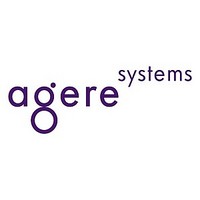OR3T125 Agere Systems, OR3T125 Datasheet - Page 62

OR3T125
Manufacturer Part Number
OR3T125
Description
3C and 3T Field-Programmable Gate Arrays
Manufacturer
Agere Systems
Datasheet
1.OR3T125.pdf
(210 pages)
Available stocks
Company
Part Number
Manufacturer
Quantity
Price
Company:
Part Number:
OR3T125-6PS208
Manufacturer:
LATTICE
Quantity:
30
Company:
Part Number:
OR3T125-6PS240-DB
Manufacturer:
LUCENT
Quantity:
96
Part Number:
OR3T125-6PS240-DB
Manufacturer:
LATTICE
Quantity:
20 000
Company:
Part Number:
OR3T1256PS208-DB
Manufacturer:
AGERE
Quantity:
201
Part Number:
OR3T1256PS208-DB
Manufacturer:
LATTICE
Quantity:
20 000
- Current page: 62 of 210
- Download datasheet (5Mb)
ORCA Series 3C and 3T FPGAs
Special Function Blocks
Boundary-Scan Cells
Figure 40 is a diagram of the boundary-scan cell (BSC)
in the ORCA series PICs. There are four BSCs in each
PIC: one for each pad, except as noted above. The
BSCs are connected serially to form the BSR. The
BSC controls the functionality of the in, out, and 3-state
signals for each pad.
The BSC allows the I/O to function in either the normal
or test mode. Normal mode is defined as when an out-
put buffer receives input from the PLC array and pro-
vides output at the pad or when an input buffer
provides input from the pad to the PLC array. In the test
mode, the BSC executes a boundary-scan operation,
such as shifting in scan data from an upstream BSC in
the BSR, providing test stimuli to the pad, capturing
test data at the pad, etc.
The primary functions of the BSC are shifting scan data
serially in the BSR and observing input (p_in), output
(p_out), and 3-state (p_ts) signals at the pads. The
BSC consists of two circuits: the bidirectional data cell
is used to access the input and output data, and the
62
62
p_in
p_out
p_ts
SHIFTN/CAPTURE
HOLI
0
1
SCAN IN
0
1
0
1
TCK
(continued)
D
D
BIDIRECTIONAL DATA CELL
Figure 40. Boundary-Scan Cell
Q
Q
SCAN OUT
UPDATE/TCK
direction control cell is used to access the 3-state
value. Both cells consist of a flip-flop used to shift scan
data which feeds a flip-flop to control the I/O buffer. The
bidirectional data cell is connected serially to the direc-
tion control cell to form a boundary-scan shift register.
The TAPC signals (capture, update, shiftn, treset, and
TCK) and the MODE signal control the operation of the
BSC. The bidirectional data cell is also controlled by
the high out/low in (HOLI) signal generated by the
direction control cell. When HOLI is low, the bidirec-
tional data cell receives input buffer data into the BSC.
When HOLI is high, the BSC is loaded with functional
data from the PLC.
The MODE signal is generated from the decode of the
instruction register. When the MODE signal is high
(EXTEST), the scan data is propagated to the output
buffer. When the MODE signal is low (BYPASS or
SAMPLE), functional data from the FPGA’s internal
logic is propagated to the output buffer.
The boundary-scan description language (BSDL) is
provided for each device in the ORCA Series of FPGAs
on the ORCA Foundry CD. The BSDL is generated
from a device profile, pinout, and other boundary-scan
information.
DIRECTION CONTROL CELL
D
D
Q
Q
0
1
0
1
MODE
PAD_IN
Lucent Technologies Inc.
PAD_OUT
I/O BUFFER
PAD_TS
Data Sheet
June 1999
5-2844(F
Related parts for OR3T125
Image
Part Number
Description
Manufacturer
Datasheet
Request
R

Part Number:
Description:
Power Modules DC/DC Converters
Manufacturer:
Agere Systems
Datasheet:

Part Number:
Description:
Quad differential driver. Intern. term. none. Surge-protection no.
Manufacturer:
Agere Systems
Datasheet:

Part Number:
Description:
InGaAs Avalanche Photodetector
Manufacturer:
Agere Systems
Datasheet:

Part Number:
Description:
Ringing Access Switch
Manufacturer:
Agere Systems
Datasheet:

Part Number:
Description:
Quad differential receiver
Manufacturer:
Agere Systems
Datasheet:

Part Number:
Description:
ORCA feild-programmable gate array. Voltage 3.3 V.
Manufacturer:
Agere Systems
Datasheet:

Part Number:
Description:
Quad differential driver. Intern. term. none. Surge-protection no.
Manufacturer:
Agere Systems
Datasheet:

Part Number:
Description:
Quad Differential Line Receivers
Manufacturer:
Agere Systems
Datasheet:

Part Number:
Description:
4096-channel, 32-highway time-slot interchager
Manufacturer:
Agere Systems
Datasheet:

Part Number:
Description:
QUAD-FET (Fast Ethernet Transceiver) for 10Base-T/100Base-TX/FX
Manufacturer:
Agere Systems
Datasheet:











